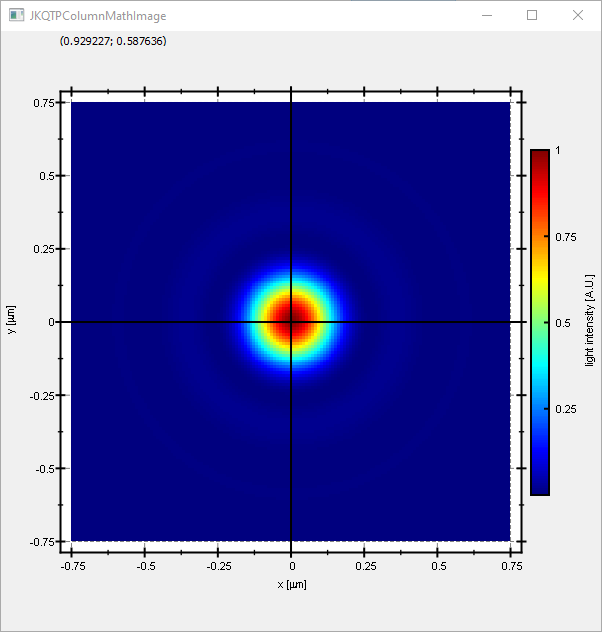 |
JKQTPlotter trunk/v5.0.0
an extensive Qt5+Qt6 Plotter framework (including a feature-richt plotter widget, a speed-optimized, but limited variant and a LaTeX equation renderer!), written fully in C/C++ and without external dependencies
|
 |
JKQTPlotter trunk/v5.0.0
an extensive Qt5+Qt6 Plotter framework (including a feature-richt plotter widget, a speed-optimized, but limited variant and a LaTeX equation renderer!), written fully in C/C++ and without external dependencies
|
This project (see ./examples/imageplot_cimg/) simply creates a JKQTPlotter widget (as a new window) and adds a color-coded image plot of a mathematical function (here the Airy disk). The image is generated as a CImg cimg_library::CImg<double> image and then copied into a single column of the internal datastore (JKQTPMathImage could be directly used without the internal datastore).
To copy the data a special CImg Interface function JKQTPCopyCImgToColumn() is used, that copies the data from a cimg_library::CImg<double> directly into a column.
The function JKQTPCopyCImgToColumn() is available from the (non-default) header-only extension from jkqtplotter/jkqtpinterfacecimg.h. This header provides facilities to interface JKQTPlotter with CImg. The CImg-binding itself is header-only, and NOT compiled into the JKQtPlotter libraries. Therefore you can simply include the header and use the facilities provided by it.
The CMake-build system of JKQtPlotter (and its examples) provides facilities to allow for find_package(CImg) to compile against that library. If you want to build the CImg-based JKQtPlotter examples (see list above), you either have to ensure that CMake finds CImg by itself (i.e. somewhere in the default search paths, e.g. CMAKE_INSTALL_PREFIX), or you can set the CMake variable CImg_DIR so it points to the directory of the CImg.h file, or before configuring JKQtPlotter.
The source code of the main application is (see imageplot_cimg.cpp:
The result looks like this:

See examples/imageplot for a detailed description of the other possibilities that the class JKQTPColumnMathImage (and also JKQTPMathImage) offer with respect to determining how an image is plottet.